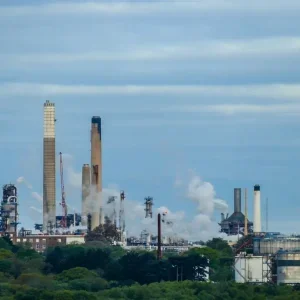
Jan De Nul Group has completed the installation of all foundations for phase two of the 120MW Formosa 1 offshore wind project off the coast of Taiwan.
Located around 6km off the west coast of the Miaoli district in the Taiwan Strait, the wind farm is owned by Orsted with 35% stake, JERA with 32.5% interest, Macquarie Capital with 25% stake and Swancor holding 7.5% interest.
As part of the engineering, procurement, construction and installation contract for the project’s overall balance of plant components, Jan De Nul had mobilised the Seaway Yudin vessel to install the monopiles and transition pieces.
Formosa 1 wind project to be commissioned before 2020
The foundations features a monopile and transition piece structure with a grouted connection. Weighing 465 tonnes each, the transition pieces consists of five internal platforms, an external platform, and boat landing.
Jan De Nul said in a statement: “Over a period of less than one year Jan De Nul Group managed to complete the fabrication process, the sea transport, the load in and out at the marshalling harbour in the Port of Taichung, and finally the installation of all foundations offshore.
“With the parallel installation of scour protection, export and inter array cables being well underway, Jan De Nul Group are fast tracking the completion of the project.”
Expected to be the first commercial-scale offshore wind farm in Taiwan before 2020, Formosa 1 project is being developed in two phases with phase 1 involving the installation of two wind turbines with a total capacity of 8MW.
Under the second phase, a total of 20 wind turbines are planned to be installed, adding to Formosa 1’s current 8MW capacity.
Recently, engineering services provider ALE has formed a new joint venture with Giant Taiwan to provide onshore handling, transportation, and storage of wind turbine foundations for the second phase of the Formosa 1 project.
Key phases of the project included transportation and loading multiple monopoles from their point of fabrication in Rostock, Germany, the development of earthquake-resilient storage facilities at the Port of Taichung, Taiwan and the load-in of both monopoles and transition pieces to the wind farm’s location.






